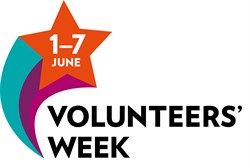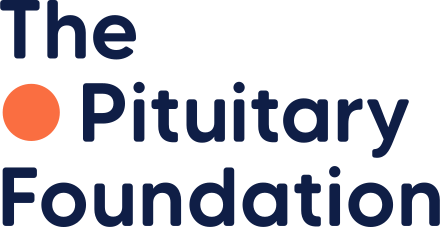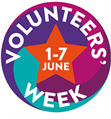
Martin is Area Coordinator of the Newcastle Local Support Group
I was diagnosed with a craniopharyngioma (pituitary tumour) following an MRI scan in July 2009 and had surgery to remove the tumour shortly afterwards. I had been suffering from fatigue and my peripheral vision was worsening. I mentioned this to my Endocrinologist who arranged some blood tests and they showed that I wasn’t producing suggicient testosterone. The tumour was 4cm in diameter which I believe is quite large for this type.
The scan below shows the affected area before (left) and after surgery. The tumour is the large white area.
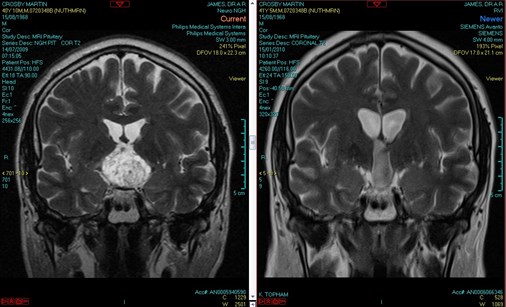
The surgery lasted five hours. Afterwards I spent about four weeks in hospital, the first two of which were on the High Dependency Unit. While I was in hospital I developed a pulmonary embolism and in many ways that was the worst aspect of the whole episode – the pain was terrible. After leaving Newcastle General Hospital I spent four weeks in Walkergate Park which is a specialist neuro-rehab hospital. My recovery began to speed up while I was in there, with cognitive and physical rehab sessions with various members of the team.
I came home for good at the end of September 2009 and then spent the next six months or so at home recuperating. All told I was off work for around eight months. Whilst it home I began to stress about returning to work which was something I had not thought about previously. It was during this time that I became aware of The Pituitary Foundation and in particular the highly specialised leaflets that they provide.
The Newcastle Group
Having returned to work I started to reflect on the fact that there had been no support group when I had really needed one. There had been a group some years before but it disbanded by the time of my surgery. Consequently I decided to try and set a group up, publicising it via The Foundation website and also with posters in the Endocrine clinics locally. The first meeting of the new group was back in October 2011. It was quite well attended and I was consequently optimistic for the future.
However at subsequent meetings attendances dropped off. I had decided on a Saturday morning as the best time based on conversations with leaders of other groups but finding a suitable location was difficult. We tried a local coffee shop for two or three meetings. While attendances were poor, a hardcore of five or six regular attendees began to develop.
I was also able to arrange some publicity in a local newspaper – The Evening Chronicle – who ran quite a large article publicising my recovery and the group in October 2015 and that coincided with an increased attendance at meetings.The group then moved to a room on Ward 5 at the Royal Victoria Infirmary which has become our home ever since.
Where possible I try and arrange a speaker but this isn’t always possible. Much of the benefit comes from the shared experiences of the group members – there is nearly always some common ground – and members take a great deal of comfort in their shared experiences.
Currently we have 50 patients on our books plus relatives and friends. Average attendance is somewhere between 20 and 30 and we are a friendly bunch. I hope to plan our first post-COVID meeting soon!
